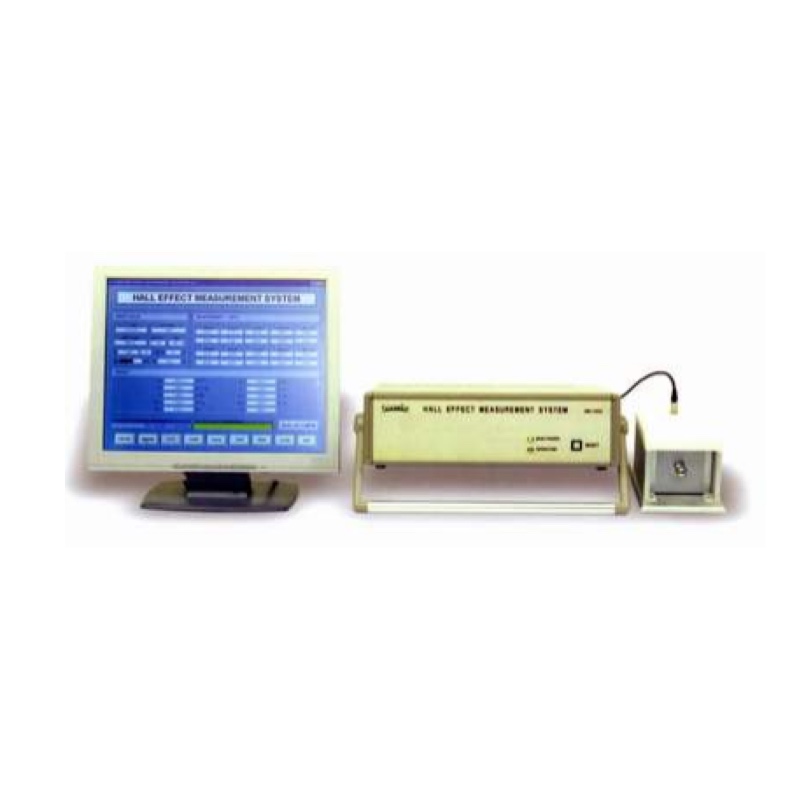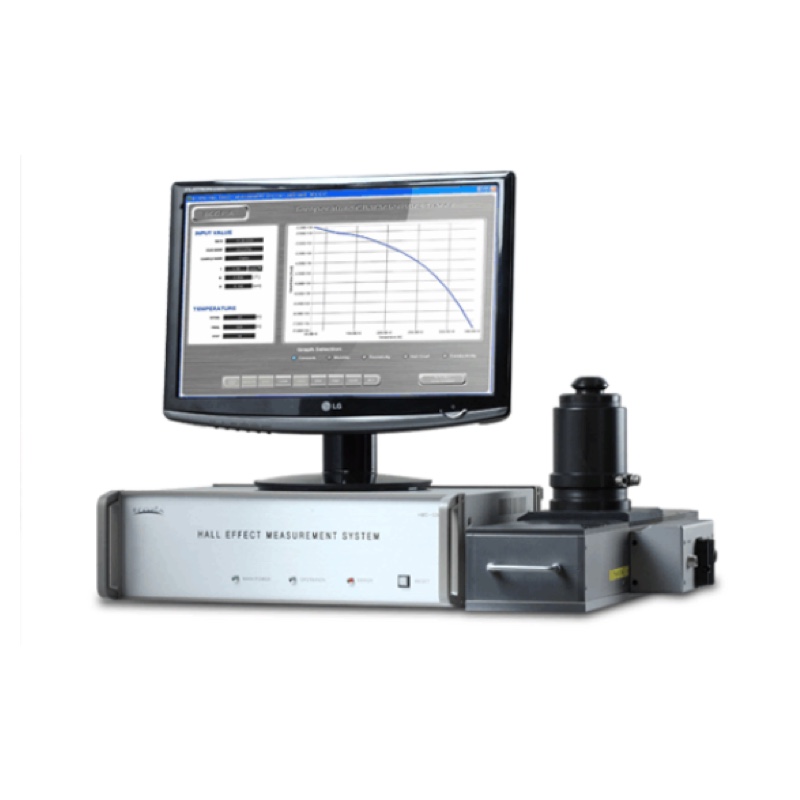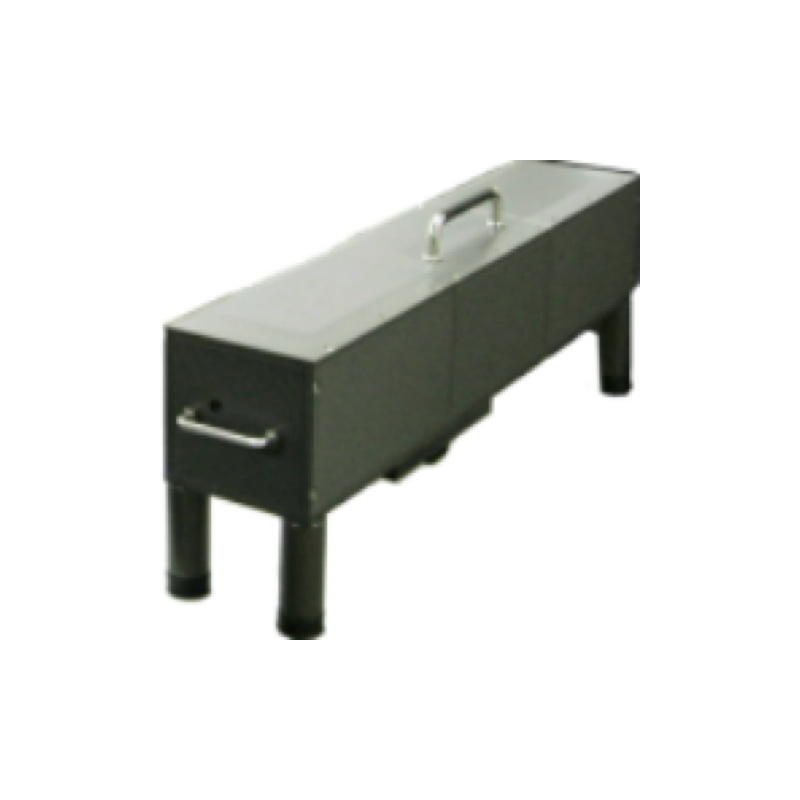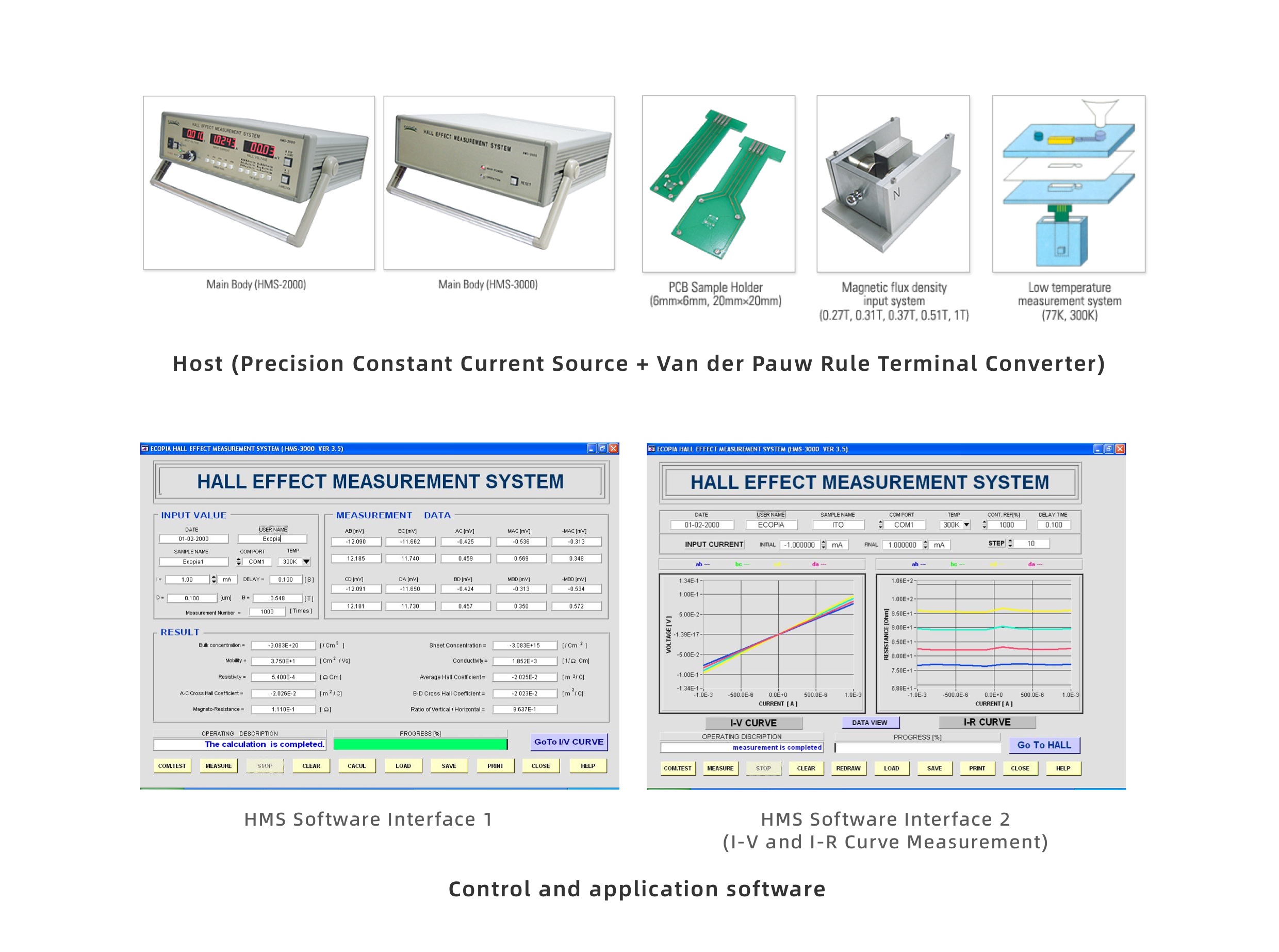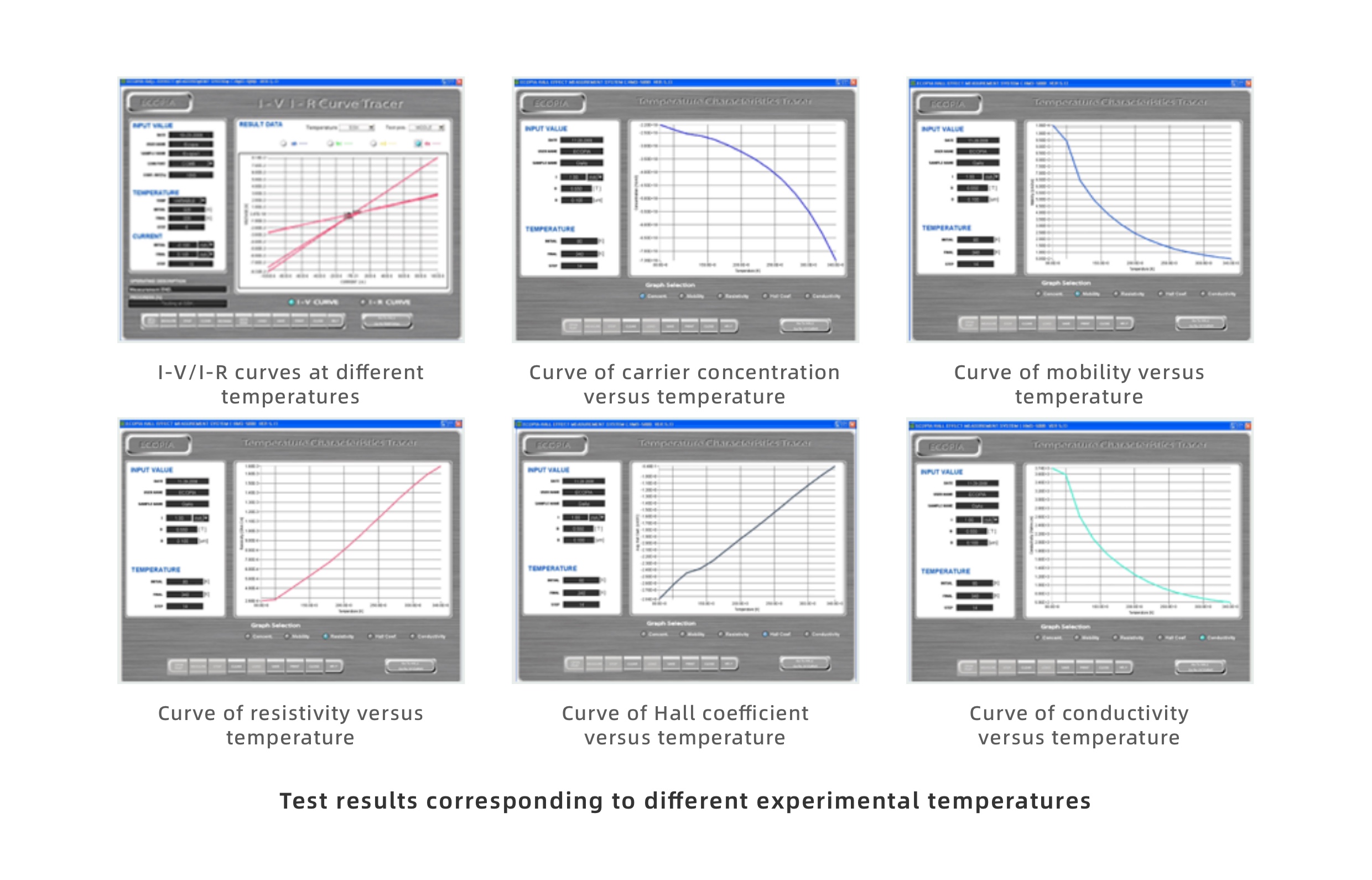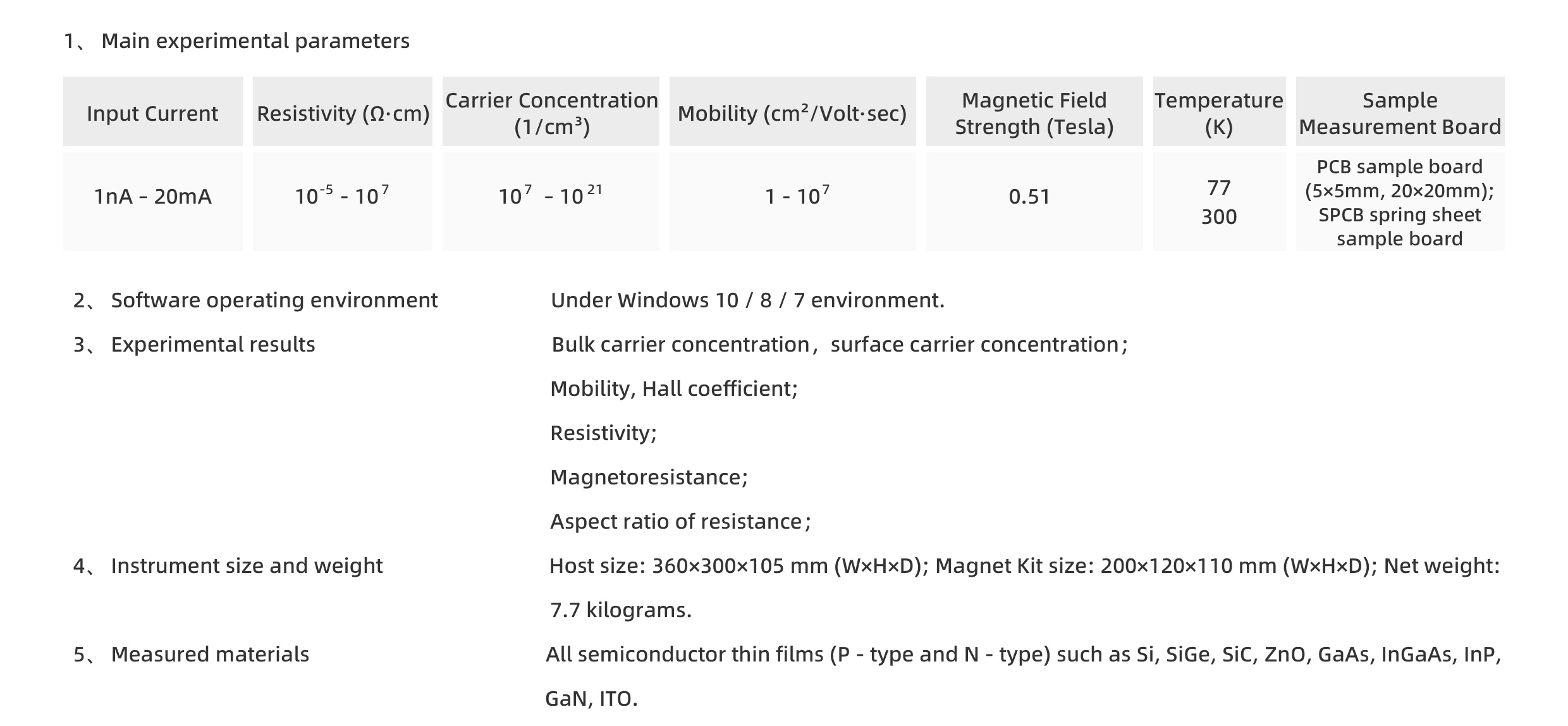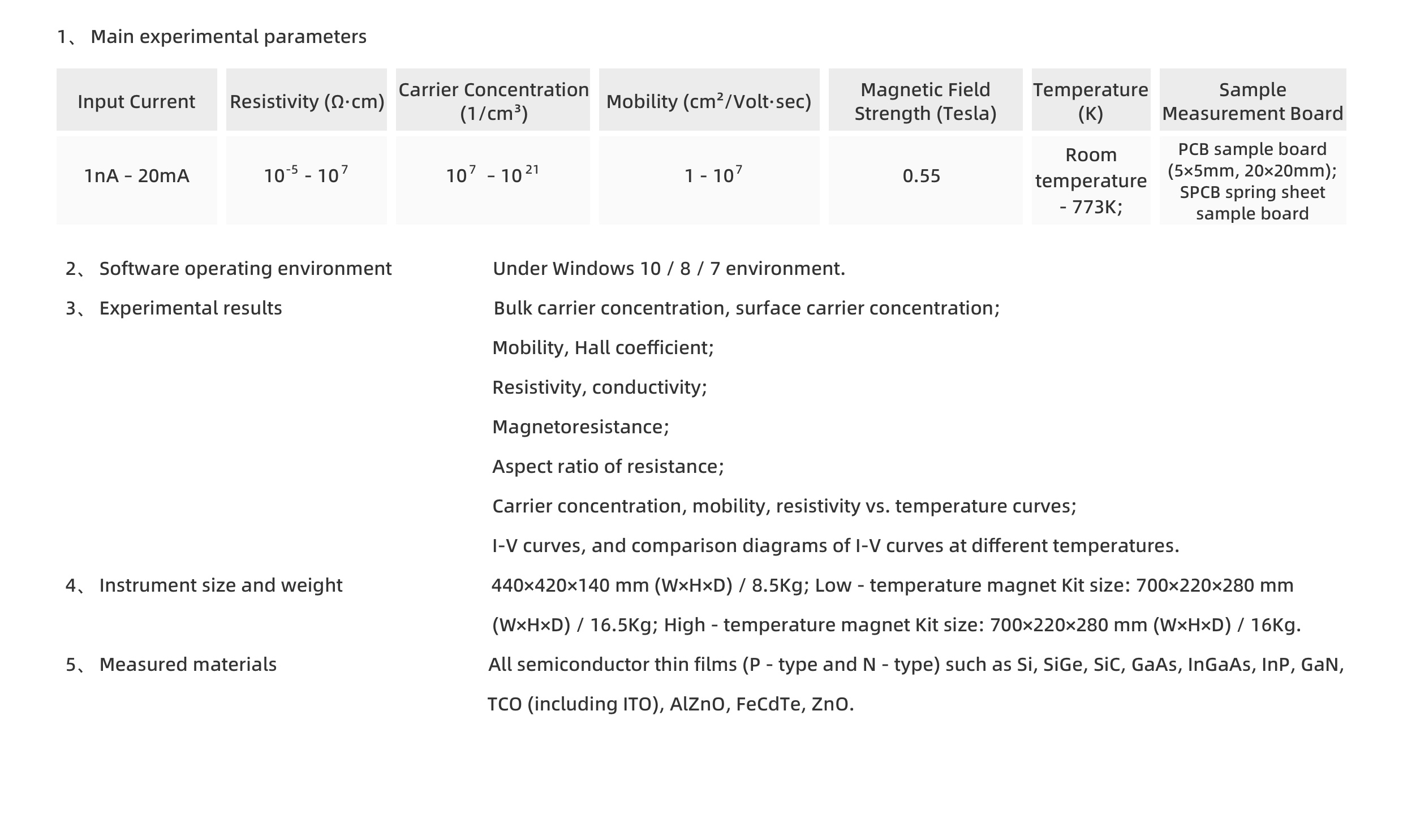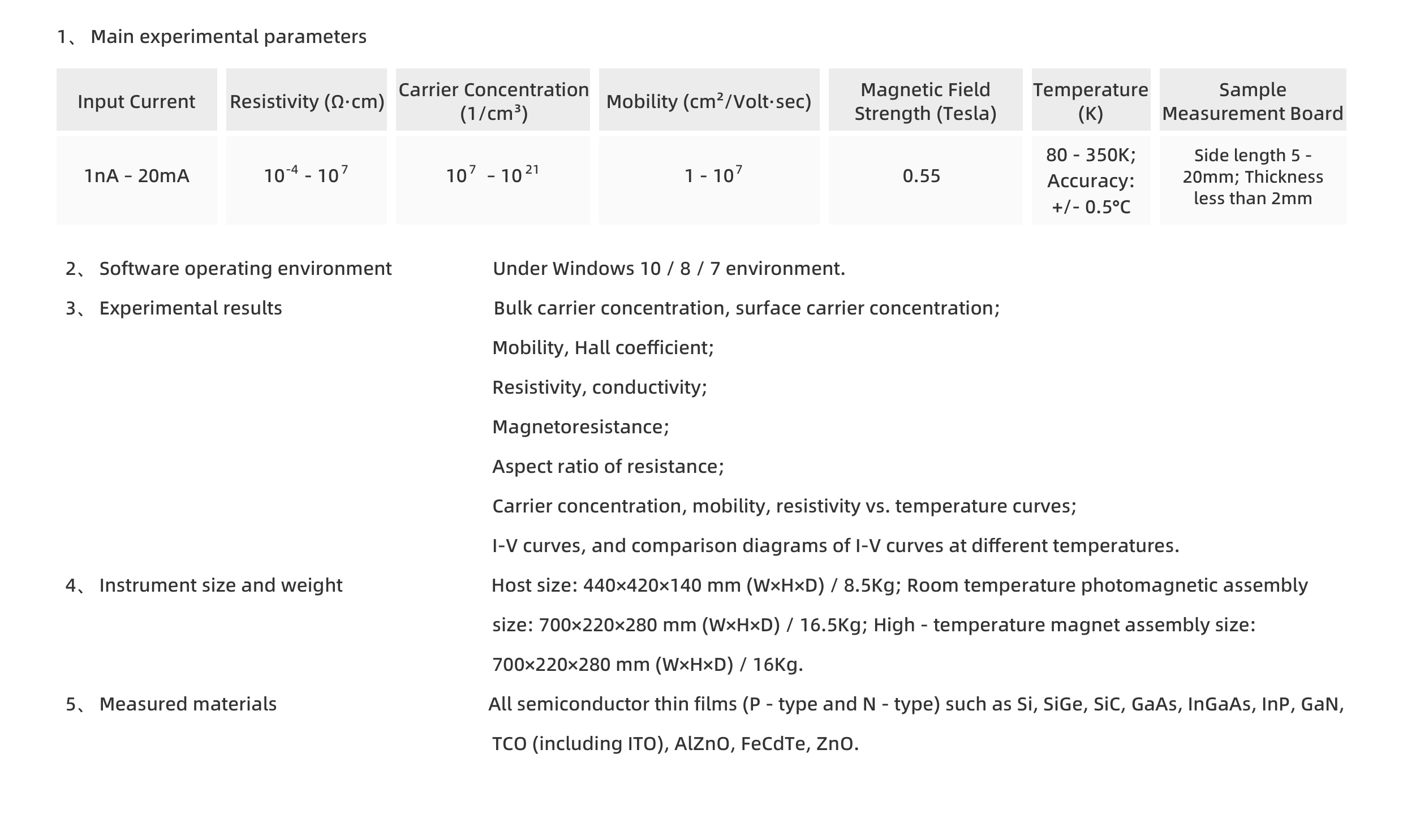Hall Effect measurement instruments are primarily used to measure critical parameters of semiconductor materials, including carrier concentration, mobility, resistivity, Hall coefficient, and conductivity type. These parameters are essential prerequisites for understanding the electrical properties of semiconductor materials; therefore, Hall Effect measurement instruments are indispensable tools for understanding and researching the electrical characteristics of semiconductor devices and materials.
The HMS Series Hall Effect Measurement Systems by ECOPIA mainly consist of a constant current source, a Van der Pauw method terminal converter, a low-temperature (77K) measurement system, and a magnetic field strength input system. Equipped with all the necessary components and configurations for researching the Hall Effect in semiconductor materials, it is a highly mature instrument system. Additionally, the HMS Series instruments have obtained multiple patents for Hall Effect measurement systems and measurement methods, representing global quality in Hall Effect measurement as well as competitive product pricing, and have gained recognition from customers worldwide. This product received CE certification in July 2004.
Product Features
1. Reliable Precision and Reproducibility
The constant current source (1nA ~ 20mA) adopts a 6-level current range setting, minimizing acceptable errors. The Van der Pauw method conversion uses a non-contact device to effectively reduce instrument noise. Targeted hardware and software designs ensure that each set of experimental data is the average of multiple tests, endowing the instrument with excellent data reproducibility.
2. Compact Product Design and Simplified Operation
The small-sized magnetic field strength input system uses permanent magnets and a liquid nitrogen low-temperature measurement system (77K), ensuring extremely simple instrument operation. Two types of traditional sample holders (2020mm, 66mm) and sample holders with spring clips (SPCB) facilitate easier measurement of thin-film samples of different sizes and materials. Compared with traditional sample holders, the spring-clip sample holders make Hall electrode fabrication more convenient and cause less damage to samples.
3. I-V Curve and I-R Curve Measurement
In the form of graphs, the system measures the current-voltage (I-V) and current-resistance (I-R) relationships between the four measurement probes (A, B, C, D). This is used to evaluate the quality of the sample’s ohmic contact and understand the basic electrical properties of the sample.
4. Diverse Experimental Results
Experimental results are automatically calculated by the software, enabling simultaneous acquisition of parameters including bulk carrier concentration, sheet carrier concentration, mobility, resistivity, Hall coefficient, magnetoresistance, and the vertical/horizontal ratio of resistance.
Product Components
Main Unit (Precision Constant Current Source + Van der Pauw Method Terminal Converter) / Magnet Package (Including Sample Holders) / Software, etc.
Product Specifications
1. Main Instrument Parameters
Input Current: 1nA ~ 20mA;
Resistivity: 10⁻⁵ ~ 10⁷ Ω·cm;
Carrier Concentration: 10⁷ ~ 10²¹ cm⁻³;
Mobility: 1 ~ 10⁷ cm²/(V·s);
Magnetic Field Strength: 0.37T, 0.55T, 1T, 0.25~1T variable-field magnet;
Sample Measurement Holders: PCB sample holders, SPCB spring-loaded sample holders, wafer sample holders, etc.;
Sample Size: 5mm×5mm ~ 20mm×20mm (30mm or 2-inch large sample holders available as optional accessories);
Measurement Temperature: Room temperature, 77K liquid nitrogen bath;
2. Software Operating Environment
Compatible with XP / Win7 / Win8 / Win10 operating systems
3. Experimental Results
Bulk carrier concentration, sheet carrier concentration;
Mobility;
Hall coefficient;
Resistivity, sheet resistance;
Magnetoresistance;
Vertical/horizontal ratio of resistance;
4. Instrument Dimensions and Weight
Main Unit Dimensions: 360×300×105 mm (W×H×D); Magnet Kit Dimensions: 200×120×110 mm (W×H×D);
Net Weight: 7.7 kg;
5. Measurable Materials
All semiconductor thin films (P-type and N-type) such as Si, SiGe, SiC, ZnO, GaAs, InGaAs, InP, GaN, ITO, etc.;

